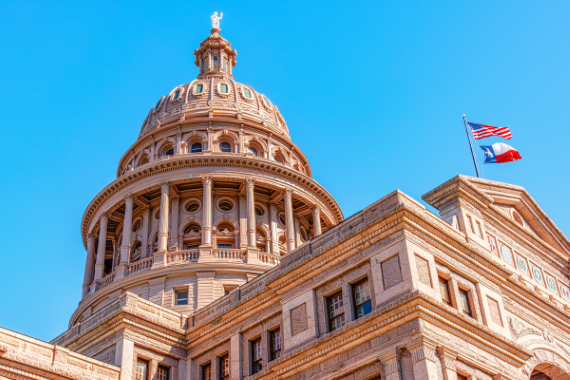Texas’ Future in Innovation: Why Extending the R&D Tax Credit is Essential
Published Mar 18, 2025 by Jordan Overturf
Texas continues to position itself as a national leader in business innovation and technology. However, the Lone Star State is risking that position if lawmakers allow a Research & Development tax incentive to expire next year.
A newly released study, The Economic Effects of R&D Tax Incentives in Texas, by Rice University’s Baker Institute, highlights the substantial economic benefits of extending the state’s Research & Development (R&D) tax credit. The findings are clear: an expanded and permanent R&D tax credit would create over 113,000 jobs, generate $13.8 billion in additional Gross State Product (GSP), and strengthen Texas’ long-term economic competitiveness.
With the current R&D tax credit set to expire in 2026, the Partnership is joining a broad coalition of business leaders known as Texans for Innovation in calling on lawmakers to pass SB 2206 and HB 4393—bills that would extend and enhance the credit. This ensures that Texas won’t fall further behind other states in R&D investment and remains a top destination for technological advancements.
Below are some highlights from the study and examples of how extending this R&D tool will keep the Texas Miracle growing for future generations.
Texas' R&D Investment Gap
Despite being the second-largest state in both population and economic output, Texas significantly lags in R&D investment:
- Texas ranks 33rd in R&D investment as a percentage of GSP.
- The state contributed only 4.3% of U.S. business-funded R&D in 2022, while California’s 36.2% leads the nation.
- Existing R&D tax incentives have been intermittent and comparatively modest, making Texas less competitive in attracting research-intensive industries.
Extending and strengthening these R&D incentives will bolster our status as a business-friendly state and provide a better recruitment tool for businesses to expand or relocate.
Economic Benefits of Expanding R&D Tax Credits
The study emphasizes the significant benefits of making R&D tax incentives more robust:
- Economic Growth: Texas' GSP could rise by 0.13% over the long term.
- By 2035, Texas could add 113,850 new jobs and infuse an additional $8.5 billion in wages.
- Total investment is estimated to grow by 0.25% in the first year, with sustained growth thereafter.
These benefits make Texas more attractive for business and improve job opportunities and economic prosperity for Texans.
Fiscal Responsibility and Revenue Offsets
A common concern with tax incentives is their impact on state revenue. However, the study finds that the economic growth generated by R&D investment will offset the initial costs:
- The tax credit expansion would cost $661.4 million in FY2026 (less than 0.2% of the state budget), but increased economic activity would lead to more significant revenues from business property and sales taxes.
- Over 20 years, Texas could see a net economic gain of $58.8 billion (an 8790% ROI).
The tax credit would ultimately pay for itself by boosting overall state revenue.
Policy Recommendations
To maximize these benefits, the study’s authors recommend that Texas lawmakers:
- Extend and increase R&D tax credits beyond 2026 to create a stable investment climate.
- Make the credits permanent to reduce business uncertainty and encourage long-term investment in research projects.
“Extending these incentives is critical to attracting high-tech industries, creating jobs, and maintaining Texas’ position as a national leader in technology and innovation,” Glenn Hamer, CEO of the Texas Association of Business, said in a news release announcing the study.
Texas has long been a hub for business and innovation, but without strong R&D incentives, the state risks losing ground to competitors. SB 2206 and HB 4393 will ensure that Texas remains a top destination for cutting-edge research, high-paying jobs, and long-term economic growth.
 The Houston Report
The Houston Report




















